If you want to get the most out of your hyaluronic acid serum, there's one golden rule: apply a few drops to damp skin. Immediately follow up with a moisturizer to seal everything in.
This simple two-step process is the secret. It stops the serum from pulling moisture out of your skin (especially in dry climates) and instead helps it draw water in, delivering that signature plump, dewy look we all want.
Why Hyaluronic Acid Deserves a Spot in Your Routine
Before we get into the how-to, let's talk about why this ingredient is such a skincare superstar. Don't let the word "acid" fool you; hyaluronic acid isn't an exfoliator. It's a humectant—a moisture-binding molecule that's already found naturally in our skin. Its main job? To hold onto water, keeping our skin's tissues hydrated and nicely cushioned.
It's famous for its incredible ability to hold up to 1,000 times its weight in water. Picture it as a tiny sponge that soaks up moisture from the environment and locks it into your skin. The result is plumper, smoother-looking skin and a noticeable reduction in those pesky fine lines caused by dehydration.
The Science of a Dewy Glow
When you smooth on a hyaluronic acid serum, you're essentially creating a hydration reservoir right on your skin's surface. This is exactly why it's so good at giving you that coveted dewy glow.
As we get older, our natural production of hyaluronic acid starts to decline, which leads to dryness and a loss of elasticity. Adding a serum back into your routine helps replenish those levels, keeping your skin looking and feeling its best.
This isn't just a niche trend, either. The global demand for these serums is expected to climb to around US$ 435.4 million by 2032, a huge jump driven by everyone's desire for deep hydration and real anti-aging benefits.
More Than Just a Hydrator
Beyond just moisturizing, this powerhouse ingredient does even more. It helps support your skin barrier and can actually boost the performance of the other products in your routine.
What I love most is how gentle and versatile it is. You can pair it with almost anything, including tricky actives like vitamin C or retinoids, without causing irritation. Its benefits are found in many products, including other hydrating gels like Skinceuticals Hydrating B5 Gel, which also deliver fantastic dewy results.
And if you're looking for some specific recommendations to get started, our guide to the top hyaluronic acid products from Japan is packed with some of my personal favorites.
How to Prep Your Skin for Maximum Absorption
Trying to apply a serum to dry, unprepared skin is a bit like watering a plant with bone-dry soil—most of it just sits on top or runs right off. For hyaluronic acid to really work its magic, you have to create the perfect canvas first. And it all starts with a clean slate.
A thorough cleanse is absolutely non-negotiable. You need to clear away the daily buildup of oil, makeup, and pollutants that form a barrier on your skin. If you skip this, even the best serum can't penetrate properly, meaning you're wasting that precious product and missing out on all the benefits.
The Damp Skin Secret
Now, let's talk about the single most important prep step that so many people miss: applying hyaluronic acid to damp skin. This isn't just some casual tip from a beauty blog; it's fundamental to how the ingredient actually works. Hyaluronic acid is a humectant, which is a fancy way of saying it's hydrophilic, or "water-loving." It desperately needs moisture to grab onto and pull into your skin.
When you put it on a completely dry face, it can actually do the opposite of what you want, especially if you're in a low-humidity environment. It might start pulling moisture from the deeper layers of your skin just to have something to hold onto, which can lead to even more dehydration over time.
Getting your skin to that ideal level of dampness is easy. Here are a couple of ways I do it:
- Right After Cleansing: This is my favorite method. Just pat your face gently with a towel after washing, but don't dry it completely. Apply the serum right away while your skin is still slightly moist.
- Use a Facial Mist: A quick spritz of a hydrating facial mist (or even just plain water in a spray bottle) right before your serum works wonders. It gives the hyaluronic acid an instant drink of water to absorb.
This small change makes a massive difference. Seriously. Applying serum to slightly damp skin can boost hydration levels by up to 30% compared to putting it on dry skin. It's the key to getting that plump, dewy look you're after. You can find more details in recent market research about the importance of correct serum application.
For a quick reference, here's a simple breakdown of the process.
Your 3-Step Hyaluronic Acid Application Method
This quick guide will help you apply your hyaluronic acid serum correctly every time, ensuring you get maximum hydration and that coveted dewy finish.
| Step | Action | Expert Tip |
|---|---|---|
| 1. Cleanse | Wash your face with a gentle cleanser to remove impurities. | Pat your skin mostly dry with a clean towel, leaving it slightly damp to the touch. |
| 2. Dampen | If your skin has dried, spritz it lightly with a facial mist or water. | Don't drench your skin. You're aiming for a dewy, not soaking wet, surface. |
| 3. Apply | Dispense 2-3 drops of serum onto your fingertips and gently press it into your skin. | Focus on areas that tend to be drier, like your cheeks and forehead. |
By prepping your skin this way, you're setting the stage for your serum to become a supercharged hydrator. The goal is to give those hyaluronic acid molecules plenty of water to bind to from the get-go. This simple habit ensures moisture gets locked in, not pulled out.
And once you've applied your serum, the next step is just as important: sealing it all in. Our guide on the best Japanese moisturizers for dry skin can help you find the perfect product to lock in that hydration.
The Right Way to Apply Your Serum
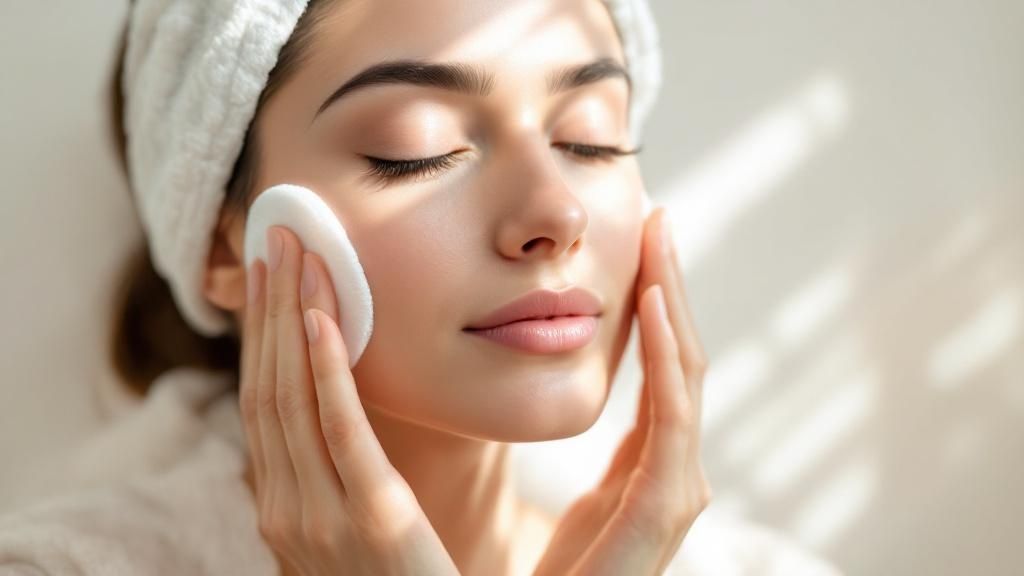 Okay, let's get into the main event—applying the serum. We're moving past the generic advice here and into the specific techniques that skincare pros actually use. This is where a good product becomes a great one, all based on how you put it on.
Okay, let's get into the main event—applying the serum. We're moving past the generic advice here and into the specific techniques that skincare pros actually use. This is where a good product becomes a great one, all based on how you put it on.
First things first, forget squeezing a big dollop into your palm. Most of it will just sink into your hand before it ever gets to your face, which is just a waste of good product. We're aiming for precision.
Dispense and Distribute Smartly
You'd be surprised how little you actually need. For your entire face, a pea-sized amount, or about 2-3 drops of hyaluronic acid serum, is the sweet spot. I always recommend dispensing it directly onto your fingertips for maximum control.
Once you have it on your fingers, gently dot the serum across your face—forehead, cheeks, chin, and nose. This gives you an even starting point and prevents you from overloading one area. Don't forget to sweep any extra down your neck and onto your décolleté; these spots get thirsty too and are often the first to show signs of aging.
Master the Pat and Press Method
With the serum dotted on, it's time to work it in. The absolute best way to do this is to gently pat and press it into your skin. Whatever you do, avoid rubbing. Rubbing creates friction and can irritate the skin, and honestly, it just pushes the product around on the surface instead of helping it absorb.
The patting motion is much more effective. It encourages the serum to sink into that freshly prepped, damp skin and even gives your circulation a little boost. It’s a gentle approach that works with your skin.
Pro Tip: Use the pads of your fingers in a light, rhythmic tapping motion, almost like you're playing piano on your face. This is my go-to method for getting a perfectly consistent, even layer of hydration.
Research backs this up, showing that consistent, proper application is what truly makes a difference. Applying just 2-3 drops to a clean, damp face twice a day can seriously boost hydration levels and soften the look of fine lines over time. It's no wonder that hyaluronic acid, with its incredible safety profile, has become a non-negotiable step in so many routines. You can find more on why hyaluronic acid formulations are in high demand and see just how popular this ingredient has become globally.
By being a bit more mindful with your technique, you ensure every last drop goes exactly where it needs to, giving you that beautiful, even blanket of hydration.
How to Layer Products After Hyaluronic Acid
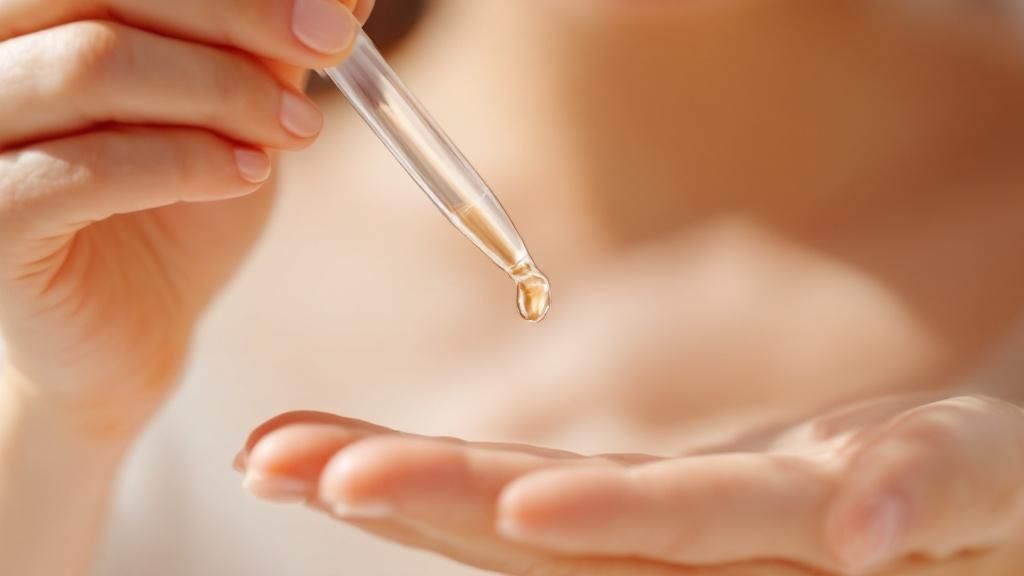
So, you’ve applied your hyaluronic acid serum. That’s a fantastic start, but what you do next is just as important. Think of your serum as the magnet pulling moisture into your skin; now you have to keep it there. If you skip the next step, all that lovely hydration can simply evaporate, especially if you're in a dry environment.
This is where your moisturizer makes its grand entrance. It's the non-negotiable step that seals the deal, preventing what's known in the skincare world as transepidermal water loss. By smoothing a cream or lotion over the top, you create a protective barrier that locks all that juicy hydration right where you want it—deep within your skin.
Without that final seal, your serum can't live up to its full potential, and you'll miss out on the plump, dewy results you're after.
Building Your Morning and Evening Routines
Layering doesn't need to be a complicated puzzle. The golden rule I always follow is to apply products from the thinnest texture to the thickest. Since hyaluronic acid is a watery, lightweight serum, it should always go on before any heavier creams, facial oils, or intensive treatments.
Here’s a simple way to visualize how it fits into your day and night:
- Morning Routine: Start with your cleanser and an optional toner. Apply a Vitamin C serum, then follow up with your hyaluronic acid serum. Finish it all off with your go-to moisturizer and, the most critical step, sunscreen. Sunscreen is always, always last.
- Evening Routine: After cleansing (and toning, if that's your thing), apply your active treatment like retinol. Follow that with your hyaluronic acid serum to add back a burst of hydration. Finally, lock everything in with a nourishing night cream.
One of the best things about hyaluronic acid is how well it plays with others. It’s incredibly compatible with potent actives like retinoids and Vitamin C. In fact, its powerful hydrating properties can actually help soothe the potential irritation and dryness these ingredients sometimes cause, making them much more tolerable for sensitive skin.
Getting the order right is what makes a good routine truly effective. If you're looking to really master the art of product cocktails, digging deeper into how to layer serums correctly will give you the confidence to build a routine that’s perfectly tailored to you. It's a small tweak that makes a world of difference, ensuring every single product you use can do its job properly.
Common Application Mistakes to Avoid
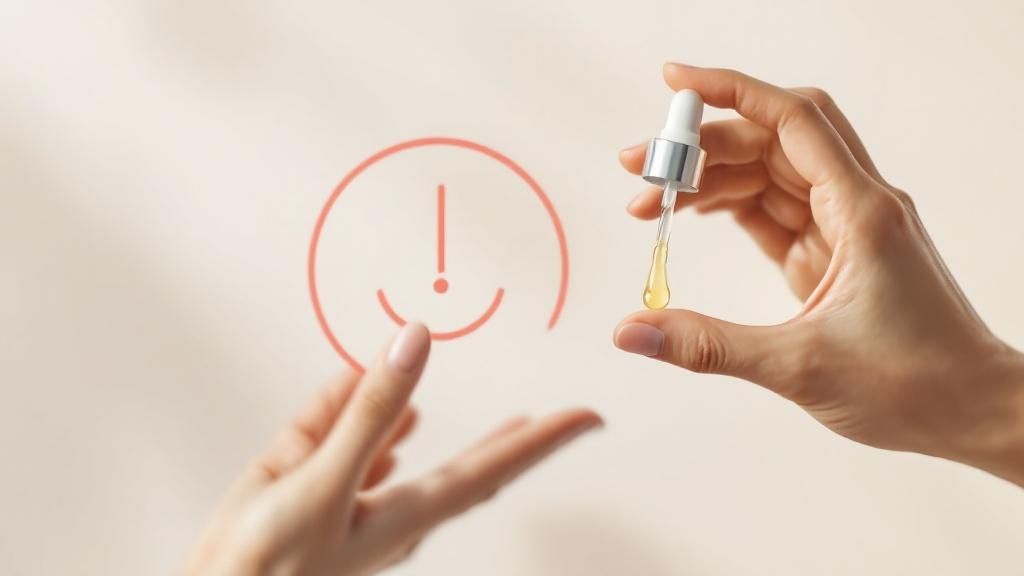
Even the most incredible products can fall flat if you don't use them correctly. If you've ever felt like your hyaluronic acid serum isn’t quite living up to the hype, you might be accidentally making one of these common mistakes. Nailing how to apply hyaluronic acid serum is all about sidestepping these simple but critical errors.
The absolute biggest pitfall? Applying it to completely dry skin. Because hyaluronic acid is a humectant, it desperately needs water to grab onto. When you put it on a dry face, especially in a low-humidity room, it can start pulling moisture from the deeper layers of your skin, which is the exact opposite of what you want!
Correcting Common Errors
Another frequent misstep is simply using way too much product. With a good serum, a little truly goes a long way; a pea-sized amount is more than enough for your entire face. Piling it on won't make it work any better and often just leaves your skin feeling sticky or tacky.
Just as important is what you do after applying it. Skipping your moisturizer is a huge no-no.
You absolutely must seal the hyaluronic acid in. Think of your moisturizer as a lid that locks in all that wonderful hydration the serum just pulled to your skin's surface. Without that final step, the moisture can easily evaporate, undoing all your hard work.
Finally, remember that while hyaluronic acid is a fantastic hydrator, it isn't a cure-all. It's a brilliant team player, but it’s not designed to be a standalone solution for every single skin concern you might have.
To make sure you're setting the stage for success, it’s worth taking a look at your cleansing step. An effective, non-stripping cleanser preps your skin perfectly for maximum absorption. For instance, a gentle option like the Hada Labo facial cleanser can make a real difference in how well the rest of your products perform.
Answering Your Hyaluronic Acid Questions
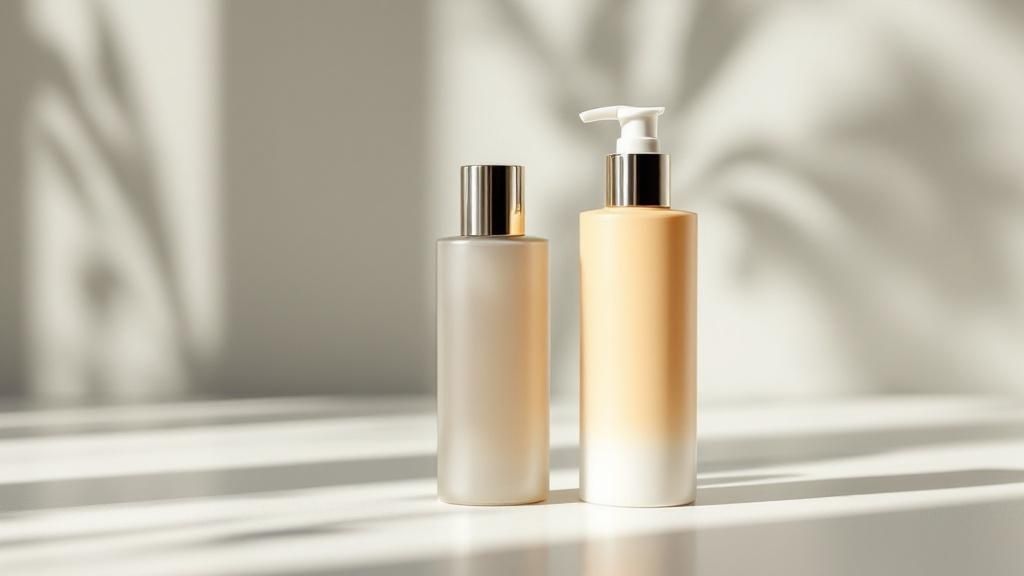
Even after you’ve got the steps down, a few questions always seem to pop up when you're figuring out how to apply hyaluronic acid serum. Let's tackle some of the most common ones so you can feel completely confident in your routine.
A top question I hear is whether you can use it every single day. The answer is a resounding yes! Its gentle nature makes it perfect for both morning and evening application. In fact, consistent daily use is exactly what you need to maintain your skin's hydration levels for that soft, plump feel.
Another common curiosity is how it plays with other potent ingredients in your lineup.
Can You Mix It With Actives?
Absolutely. Hyaluronic acid is a fantastic team player and pairs beautifully with ingredients like vitamin C, retinoids, and even exfoliating acids. Its intense hydrating properties can actually help soothe the potential dryness or irritation sometimes caused by stronger actives. Think of it as a supportive friend in your routine.
It acts as a hydrating buffer, ensuring your skin stays balanced while your treatment serums get to work. This is a core principle you'll often find in multi-step skincare philosophies, similar to the radiant skin approaches found in Japanese beauty secrets.
People also wonder if it's really suitable for all skin types. Because it's a substance naturally found in our own skin, hyaluronic acid is well-tolerated by virtually everyone—from oily and acne-prone to dry and sensitive. It gives you that lightweight hydration without clogging pores, making it a universally beneficial ingredient.
Finally, how soon can you expect to see results? You'll notice an immediate plumping effect and a boost in surface hydration right after you put it on. For the longer-term benefits, like improved skin elasticity and a reduction in fine lines, give it at least a month of consistent use to really see it shine.
Ready to perfect your skincare routine with authentic Japanese beauty products? Explore our curated collections at Buy Me Japan and find your new favorites today. Visit us at https://buymejapan.com
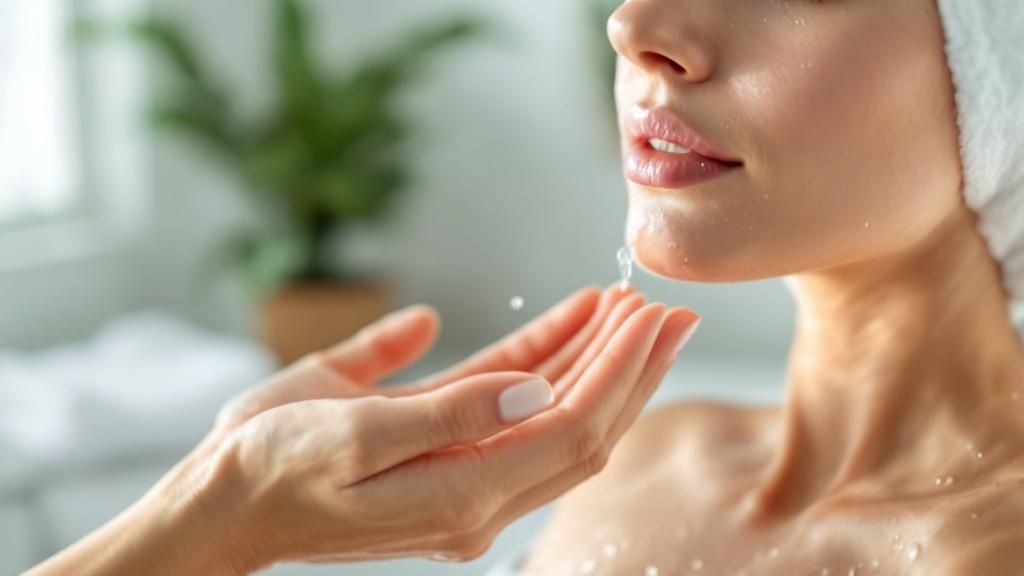
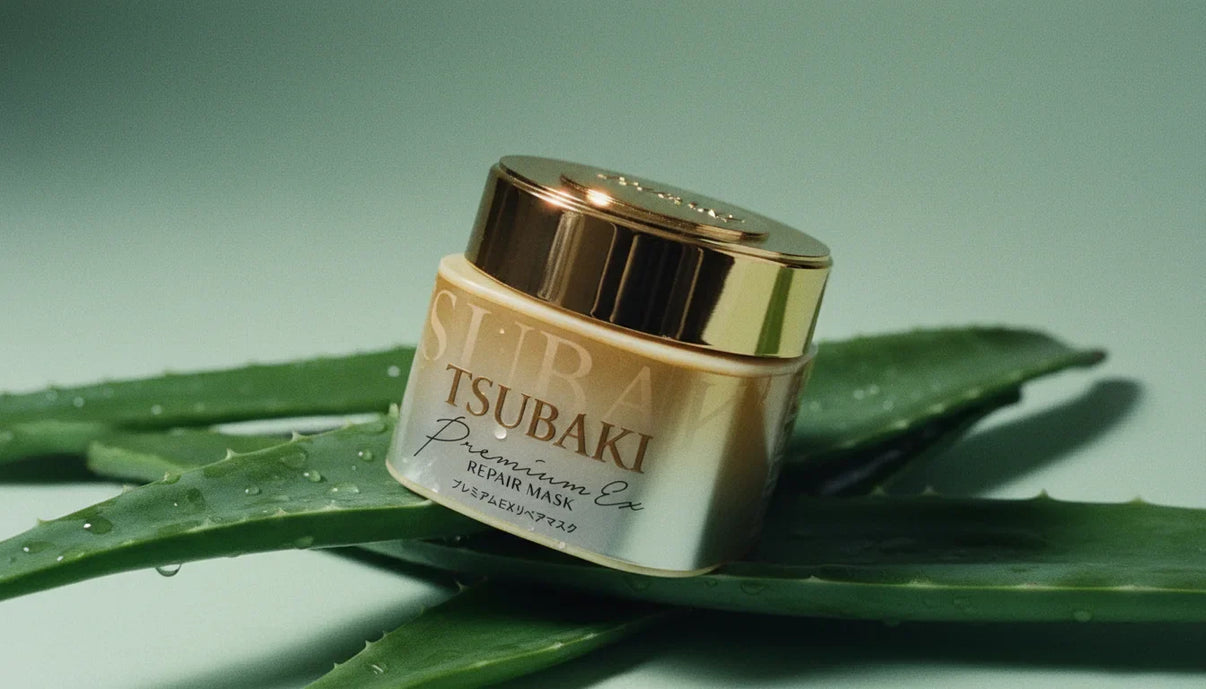

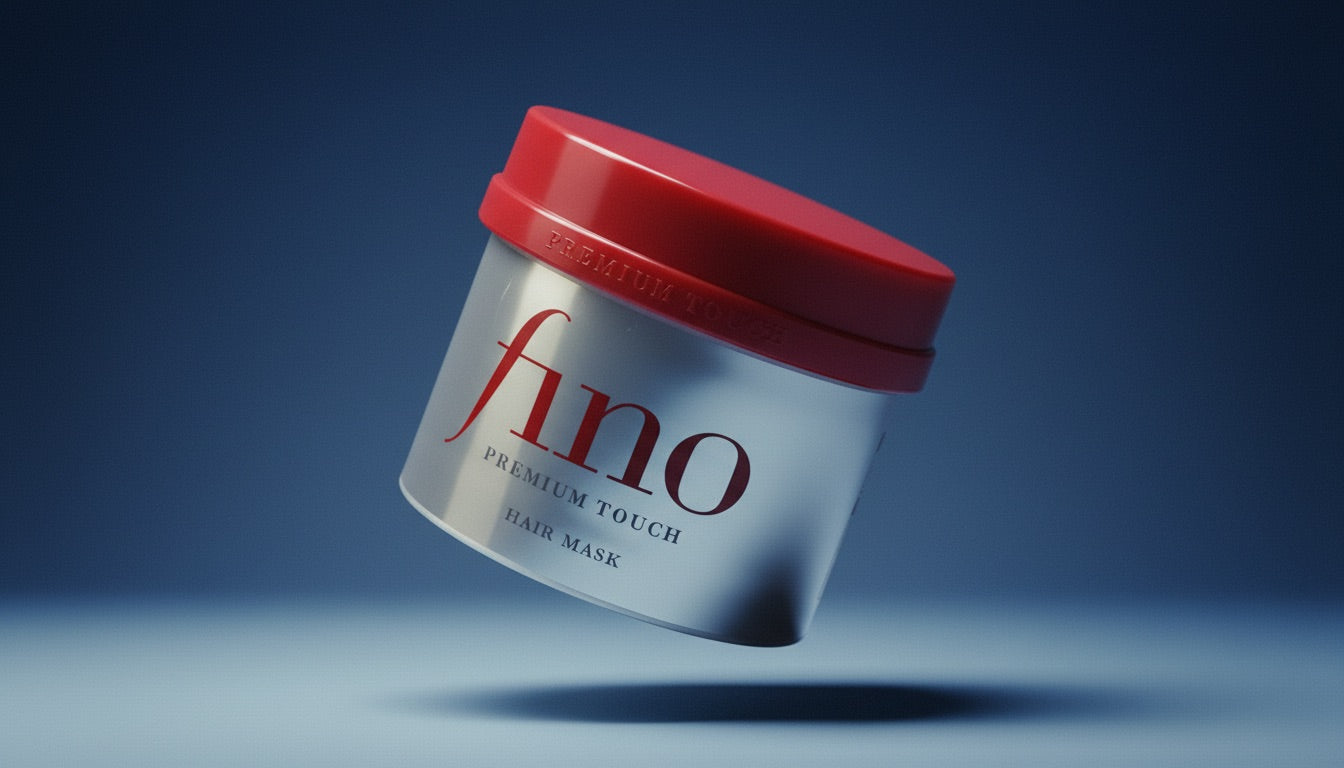
Share:
Your Guide to Japanese BBQ at Home
Your Guide to Japanese Skincare Steps